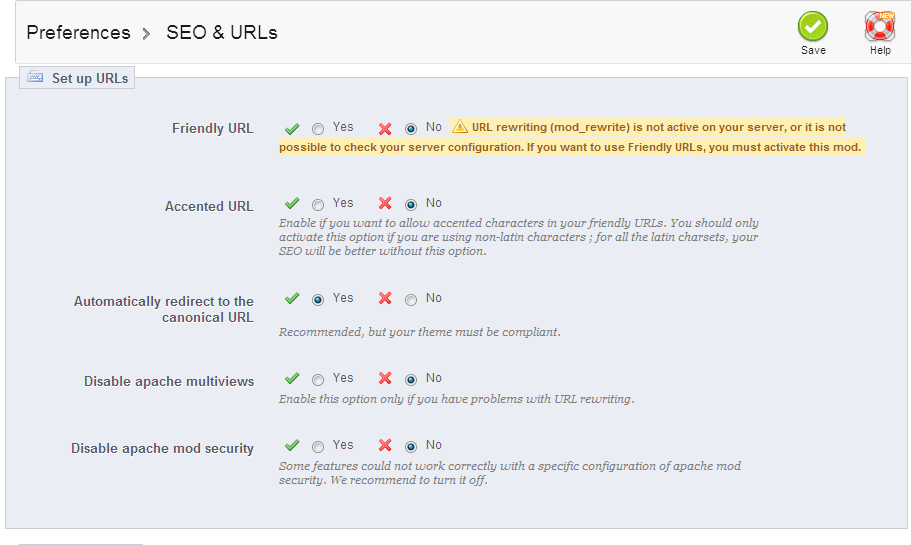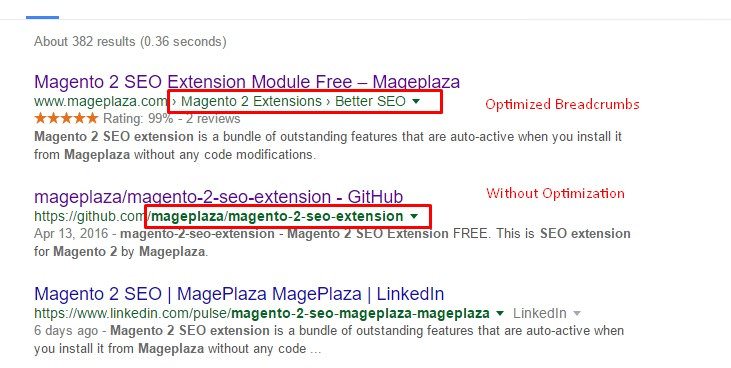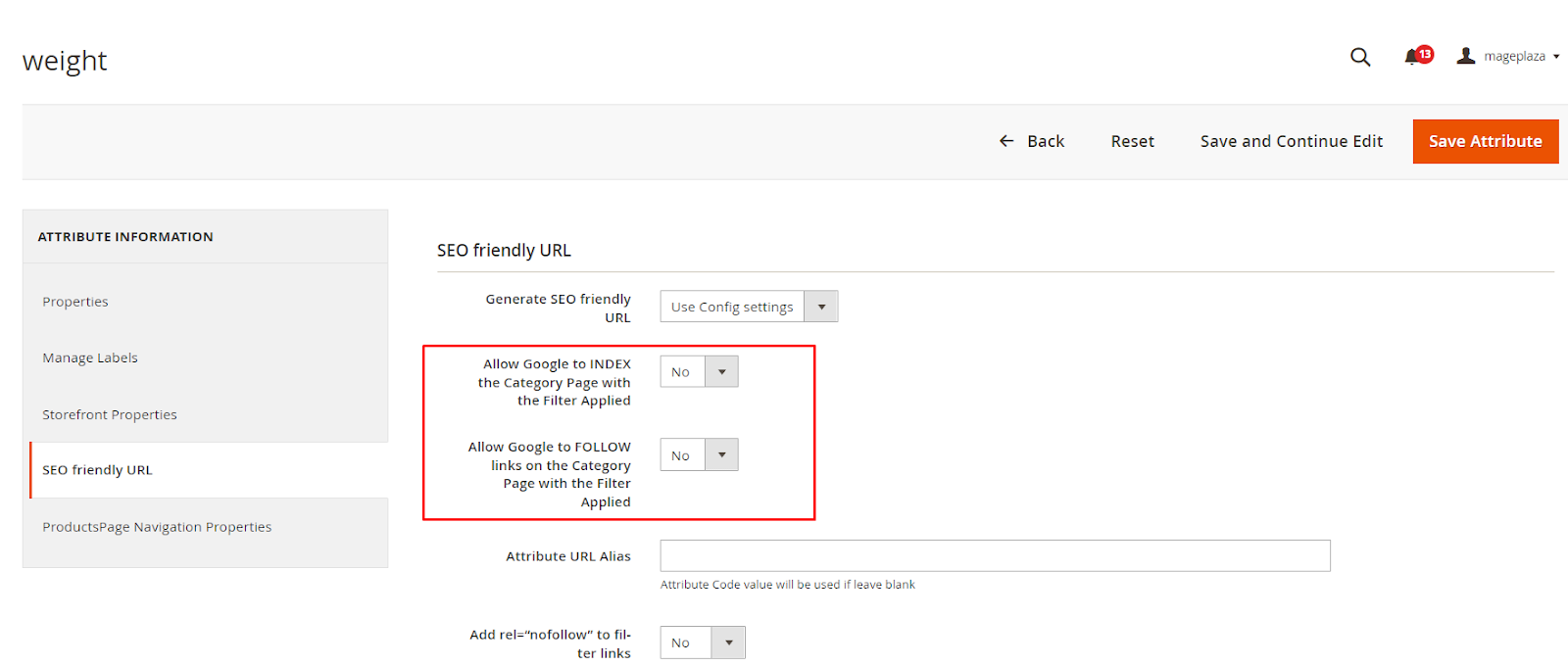Magento 2 best setting for SEO friendly Layered Navigation

Magento 2 best setting for SEO friendly Layered Navigation
Together with development of technology, people prefer online shopping rather than traditional store. To attract more visitors, SEO (Searching Engine Optimization) is the most powerful technique that any online stores need to apply.
What is Layered Navigation for SEO?
Magento 2 Layered Navigation Extension is a must-have sitemap for any websites. It benefits e-commerce stores by providing various filters to help customers obtain their desired products effectively and efficiently. Layered Navigation allows users to filters by multiple attributes such as brand, color, material, style, product’s status, price slider at the same time without reloading the whole page. However, if you do not now how to make use of its outstanding features, it may cause some drawbacks for your online website, in particular SEO management. Here are some major problems generated by Magento 2 Layered navigation:
Complicated URL: some URLs links are viewed with symbols like “?=sortby, ?p=2” that are useful neither for visitors nor spiders of search engine investigating information. These links do not meet certain standards of search engines that lower site’s rank.
Duplicate content: after filtering, there are many pages with similar titles and descriptions appearing and being considered as untrustworthy sources.
With Layered Navigation extension developed by Mageplaza, these troubles will be solved excellently and turn into competitive advantages. Here is how helpful Mageplaza Layered navigation is:
Canonical URLs:

The long and complex URLs easily downgrade your site in search engines and decrease findability of visitors. Moreover, it’s hard for customers to navigate and remember for their next purchases. This issue can be handled by setting modification: System => Configuration =>Web =>Search Engine Optimization => URL Options, choosing “No” for Add Store Code. By taking these steps, your URLs will stay away from automatic symbols containing product’s color, style or size. As a consequence, your links can easily be found and more SEO- friendly.
Customize friendly URLs

You can insert short and neat URLs paralleling with your site’s agenda. It may comprise some keywords of your products so that people can keep track with breadcrumbs easily. These understandable URLs will bear in mind of clients for their next shopping experiences.
Nonindex and nonfollow tag
For beginners to SEO Plugin for Magento 2: To get rid of duplicate contents, the easiest solution for you is index blocking. You should stop indexing all pages created by Layered Navigation by having NoIndex and NoFollow tags on all filters.
Advanced filters setting- Index brands and filter results: Sometimes, you may prefer indexing some brands which are necessary for search traffic. Layered Navigation extension by Mageplaza allows online merchants to design beautiful and practical brands page similar to the origins. Additionally, creating unique meta tags and content is actually useful for user friendly SEO.
When you let some filters page results be indexed, please note that these outcomes must be attractive with comprehensible URLs. You can choose No to NoIndex/NoFollow options for those filters occured in search. After filtering, your result pages will be displayed with specific keywords, which increase your search rank.
In conclusion, taking advantages of layered Navigation can significantly improve SEO performance as well as enhance customer’s experience and increase conversion rate.
Choosing your SEO strategy
In this blog, we recommend 3 solutions for SEO strategy as follows:
1: Block everything from indexing
Even if you’re a newcomer to the Magento 2 SEO area, it’s not hard to block all the filtered pages from indexation and following. To do so, admins need to change each filter’s SEO settings E.x: If you want to block the “weight” filter, here’s how to do it. Go to the Product Attribute settings and edit the Weight filter. Find the SEO settings section, it should look like this:

Choose No for both fields: Allow Google to INDEX the Category Page with the Filter Applied and Allow Google to FOLLOW links on the Category Page with the Filter Applied
After that, remember to press the Save button and clear your cache.
2: Add brand page indexing
Most visitors usually use a brand filter to find products from their favorite brand. So, pages filtered by brands are highly recommended to be indexed and followed. Similar to the SEO-friendly URLs settings, you can configure the Settings page of any brand.
Configure a new or current brand page with the available choices:
- Brand information: Configure information of the brand like title, URL key, image, description, etc.



- Meta information: Specify a meta title and a description for your brand.








![Top 20+ Must-have Shopify Apps for 2025 [Free & Paid] - Mageplaza](https://cdn2.mageplaza.com/media/blog/must-have-shopify-apps/top-must-have-shopify-apps.png)
![[2025 Updates] Top 10+ Upsell Apps for Shopify - Mageplaza](https://cdn2.mageplaza.com/media/blog/best-upsell-shopify-app/cover.png)